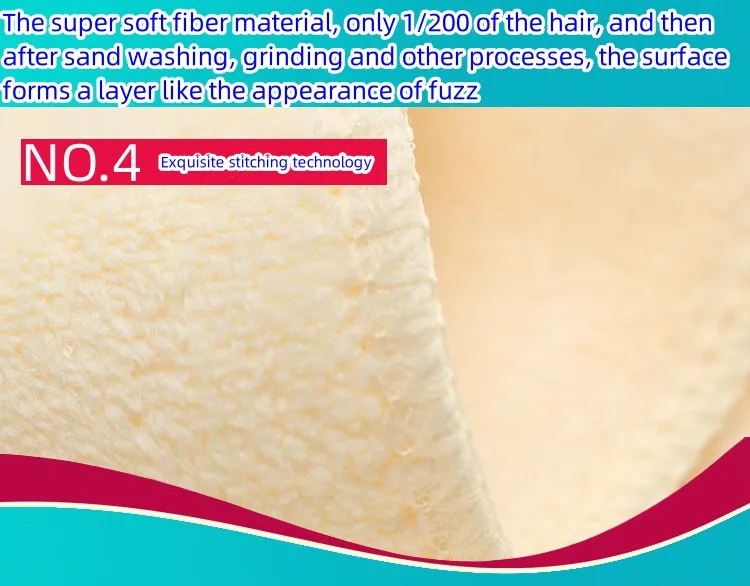Polishing Solutions Using Felt Materials for Enhanced Surface Finishing
The Versatile Use of Felt for Polishing
Felt, a textile material made from matted fibers, has been a part of human craftsmanship for centuries. Its unique properties make it an ideal choice for a variety of applications, particularly in polishing and finishing processes. In this article, we will explore the characteristics of felt, its uses in polishing, and the benefits it offers over other polishing materials.
Understanding Felt
Felt is created through a process called felting, where wool or synthetic fibers are subjected to heat, moisture, and pressure, causing the fibers to entangle and bind together. The result is a dense, durable material that can be produced in various thicknesses and densities. Felt can be made from natural fibers like wool, cotton, and silk, as well as synthetic fibers such as polyester and acrylic. Natural felt is particularly prized for its softness, resilience, and ability to absorb moisture.
The Role of Felt in Polishing
Felt has gained immense popularity in polishing due to its effectiveness in achieving smooth finishes on a wide range of surfaces. It is used in both manual and automated polishing processes across different industries, including woodworking, metalworking, automotive, and electronics.
1. Woodworking In the woodworking industry, felt pads are often used to polish wooden surfaces, providing a smooth finish without scratching. When used in conjunction with polishing compounds, felt can help to enhance the natural beauty of the wood, bringing out its grain and finish. Felt is also ideal for use on furniture, as it minimizes the risk of damaging delicate surfaces.
2. Metalworking In metalworking, felt polishing wheels and discs are widely employed for buffing metals such as aluminum, brass, and stainless steel. These felt pads are often used with abrasive compounds to achieve a high-gloss finish. Metallic surfaces benefit from the gentle abrasion of felt, which aids in removing oxidation and imperfections while leaving a polished, reflective surface.
3. Automotive The automotive industry utilizes felt for polishing various components, from painted surfaces to chrome trims. Felt polishing pads are often integral in buffing, cutting, and finishing processes, allowing for the efficient removal of scratches and surface flaws. The result is an impeccable shine that enhances the overall appearance of vehicles.
4. Electronics In electronics, felt is used for polishing delicate components such as circuit boards and optical surfaces. The non-abrasive nature of felt ensures that sensitive materials are not damaged during polishing, making it an ideal choice for maintaining the integrity of electronic devices.
felt for polishing

Advantages of Using Felt for Polishing
Several advantages make felt a preferred material for polishing tasks
- Non-Abrasive Felt is soft and non-abrasive, making it suitable for delicate surfaces that require gentle treatment. Unlike harder materials, felt does not scratch or mar the surface it is polishing.
- Versatility Felt can be used on a multitude of surfaces, including wood, metal, glass, and plastics. Its adaptability makes it a valuable tool in various industries.
- Durability Felt is a resilient material that can withstand the rigors of polishing without deteriorating quickly. This longevity reduces the need for frequent replacements, leading to cost savings.
- Ease of Use Felt pads and wheels can be easily attached to polishing machines or used manually, offering flexibility in application. Their lightweight nature also makes them user-friendly.
- Effective Dust Collection The fibers in felt can effectively trap dust and particles, preventing them from scratching surfaces during the polishing process.
Conclusion
Felt has proven to be an invaluable material in polishing applications due to its unique characteristics and versatility. Whether in woodworking, metalworking, automotive, or electronics, felt helps achieve high-quality finishes without risking damage to surfaces. As industries continue to innovate and evolve, the use of felt for polishing is likely to remain a cornerstone of craftsmanship, demonstrating its enduring value in the realm of finishing techniques. Its combination of softness, durability, and adaptability truly sets felt apart as a material essential for achieving excellence in polishing.
-
What Makes Felt a Great Choice?NewsNov.19,2024
-
Total Mixed Ration (TMR) Feed for CattleNewsNov.19,2024
-
The Ultimate Guide for Felt Polishing WheelsNewsNov.19,2024
-
Industrial Felt for Various ApplicationsNewsNov.19,2024
-
Felt Makeup Bags and Inserts BagsNewsNov.19,2024
-
Choosing the Right Hotel TowelsNewsNov.19,2024
-
Your Go-To Guide For Affordable Wholesale Wool FeltsNewsOct.31,2024







